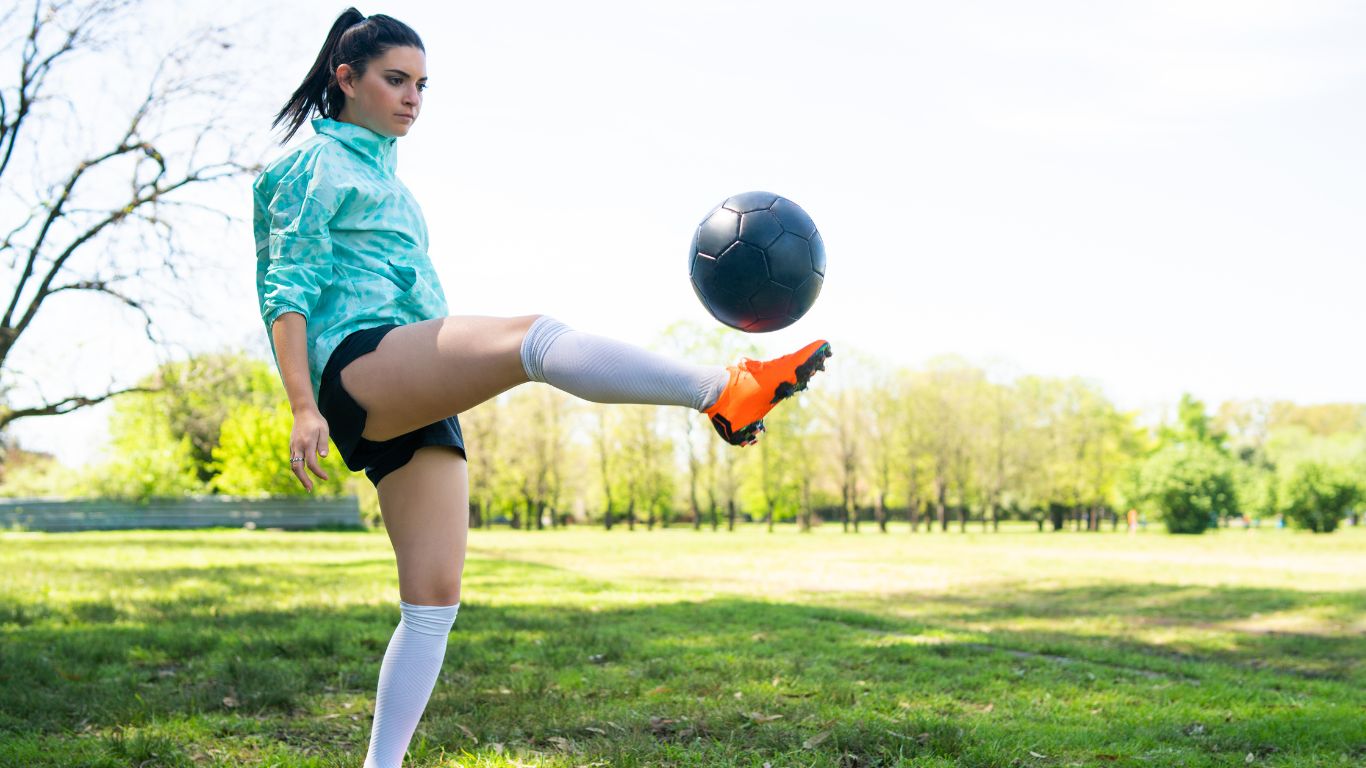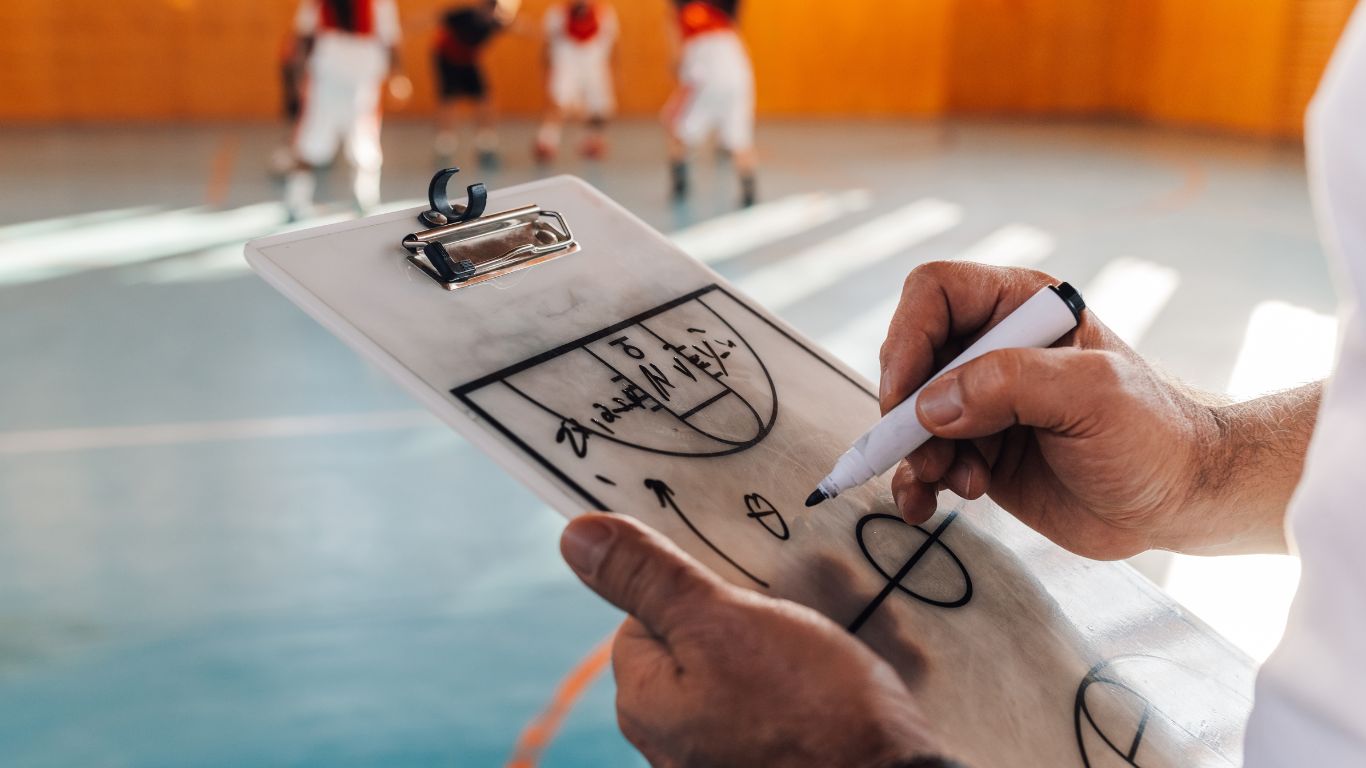Whether you’re a casual soccer player or aspiring to become a professional, there’s no denying the importance of a good kick. A well-executed kick can make or break a game, and mastering the art of kicking a soccer ball can elevate your skills to the next level. This comprehensive guide will delve into the various techniques, strategies, and training exercises that will help you perfect your kicks and unleash their full potential on the field.
From the humble instep to the powerful side volley, we’ll explore the different types of kicks and when to use them in various game situations. We’ll break down the essential elements of a perfect kick, such as proper body positioning, understanding the ball’s flight trajectory, and generating maximum power and accuracy. Additionally, we’ll uncover common mistakes to avoid, offer tips for improving your striking technique, and provide insightful advice from soccer professionals who have mastered the art of kicking. So, get your cleats on, grab a soccer ball, and prepare to embark on a journey that will take your kicking skills from ordinary to extraordinary.
Foot Placement and Body Positioning
One of the most crucial factors to remember when mastering kicking a soccer ball is foot placement and body positioning. How you position your foot and your body can significantly impact your kick’s power, accuracy, and trajectory. This section will delve into the critical aspects of foot placement and body positioning that you need to master to become a proficient kicker.
Let’s start with foot placement. The foot you use to strike the ball plays a vital role in determining the outcome of your kick. For most kicks, including regular passes or shots, you should utilize the instep of your foot, which is the area running from the base of your big toe to the bottom of your foot. This part of the foot offers a larger, more stable surface, allowing you to strike the ball precisely and powerfully.
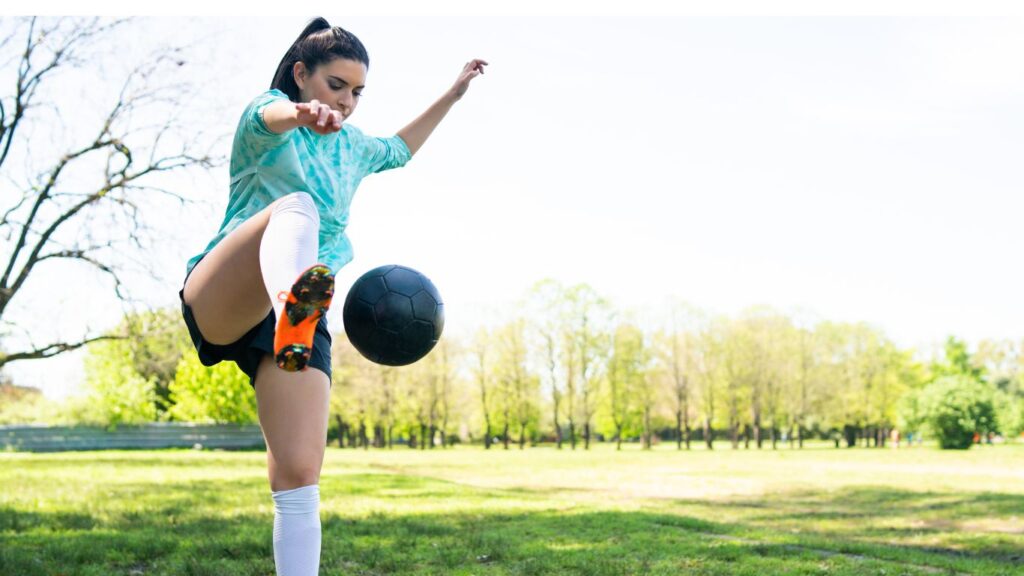
As you prepare to strike the ball, you should plant your non-kicking foot parallel to it, ensuring it points in the direction you want it to go. This provides a solid base for your kicking leg and improves balance and control. Your non-kicking foot should be placed slightly to the side and behind the ball, giving you the necessary stability and support during the kicking motion.
Next, let’s discuss the positioning of your body. Proper body positioning is essential for generating power and accuracy in your kick. As you approach the ball, keep your head and your eyes focused on the ball. This will help you maintain balance and ensure proper contact with the ball.
Your shoulders should be square to the goal or the target you are aiming for. This means that your upper body should be facing forward, perpendicular to the direction of your non-kicking foot. By keeping your shoulders square, you allow for a more natural and efficient kicking motion, maximizing the power and accuracy of your kick.
As you swing your kicking leg, your body should lean slightly back to counterbalance the kicking motion. This helps generate power in your kick and increases the speed at which your leg strikes the ball. However, be careful not to lean back too much, as this may cause you to lose control and accuracy.
When it comes to the actual kicking motion, remember to swing your leg through the ball, making sure to follow through with your leg and foot after striking the ball. This follow-through allows for a smooth and fluid motion, ensuring you transfer maximum power to the ball.
Mastering the Different Kicking Techniques
Regarding soccer, one of the most critical skills is kicking the ball accurately and with power. Whether shooting at the goal, passing to a teammate, or simply controlling the ball during a match, understanding and mastering the various kicking techniques can take your game to the next level. This section will explore the different kicking techniques that will help you become a true maestro on the field.
First and foremost, let’s start with the instep kick, also known as the regular or standard kick. This technique involves striking the ball with the laces of your foot, creating a clean and powerful shot. To execute the instep kick, approach the ball at an angle, plant your non-kicking foot next to the ball, and bring your kicking leg back. Swing your leg forward, touching the ball just below the laces. Focus on following through with your kicking leg and striking the center of the ball for maximum power and accuracy.
Next up, let’s dive into the art of the side-foot kick. This technique is perfect for short, precise passes and efficiently controlling the ball. Unlike the instep kick, the side-foot kick involves making contact with the ball using the inside of your foot, specifically the area just below the laces and towards the arch. This technique allows for increased control, minimizing the ball’s rebound upon impact. To perform the side-foot kick:
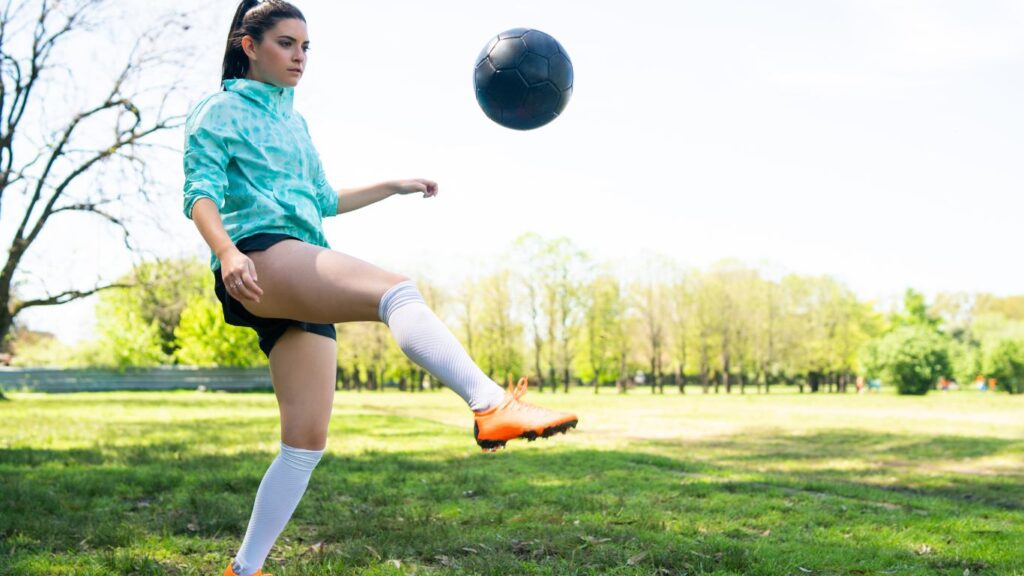
- Position your kicking foot perpendicular to the ball, keeping your ankle firm.
- Swing your leg forward, making contact with the inside of your foot.
- Remember to save your eyes on the ball and maintain a steady balance throughout the movement.
Moving on, we have the notorious volleykick. This technique involves striking the ball in mid-air without allowing it to touch the ground. Often seen during breathtaking goals or long-distance shots, the volley kick requires excellent skill and precision. To execute the volley kick:
- Position yourself accordingly, with the ball in the air.
- Keep your eyes on the ball, judge its trajectory, and determine the right timing for your strike.
- As the ball descends, swing your leg forward, ensuring a clean and solid connection.
- Remember to adjust the power of your strike according to the distance between you and the goal.
Last but not least, we have the chip shot. This finesse technique is perfect for lofting the ball over an opponent or goalkeeper or into a crowded penalty area. To perfect the chip shot, approach the ball at a slight angle, plant your non-kicking foot next to it, and angle your kicking foot accordingly. Strike the bottom-middle section of the ball with the front of your foot, keeping your ankle firm and locked. The idea here is to loft the ball into the air with a good amount of backspin, allowing it to drop softly and unpredictably.
Mastering the different kicking techniques does not happen overnight. It requires dedication, practice, and persistence. By understanding the mechanics behind each technique and honing your skills through consistent training, you will be on your way to becoming a true artist with the ball at your feet. So, get out there, experiment with these techniques, and watch your overall kicking prowess elevate to new heights. Remember, practice makes perfect, so keep on kicking!
Developing Power and Accuracy in Your Kicks
Kicking a soccer ball with power and accuracy is essential for any soccer player. Whether aiming for the goal or passing to a teammate, striking the ball with precision and strength can significantly enhance your game. This section will explore some practical techniques and exercises to help you master kicking a soccer ball with power and accuracy.

First and foremost, it is essential to understand the proper technique for a powerful and accurate kick. Start by positioning your non-kicking foot beside the ball, with your body slightly leaning forward. As you swing your kicking leg, aim to strike the ball with the laces area of your foot, also known as the instep. The contact should be made at the mid to upper section of the ball for maximum power. Remember to follow through with your kicking leg, allowing it to swing forward and across your body after making contact with the ball.
It is vital to work on your leg strength and flexibility to develop the necessary power in your kicks. Regular strength training exercises like squats and lunges can help build muscle in your legs, ultimately increasing the power of your kicks. Additionally, stretching routines focusing on your hip flexors, hamstrings, and quadriceps will improve your flexibility, allowing you to generate more force in your kicks.
Another critical aspect of developing powerful kicks is mastering your striking technique. Practice your shooting by striking the ball with various levels of power. Start with short-range shots, focusing on accuracy rather than power. Gradually increase the distance and experiment with different striking techniques to find what works best. Remember, it’s essential to maintain proper form and technique even when applying greater force to the ball.
Target practice is also beneficial for enhancing power and accuracy in your kicks. Set up targets in different areas of the goal net or field, such as cones or markers. Aim to hit these targets consistently using various techniques, such as striking the ball with the inside or outside of your foot. Practicing with targets challenges your accuracy and helps you become more confident in your ability to hit specific spots on the field.
Incorporating drills focusing on striking the ball with power will also aid your development. One helpful exercise is the power shooting drill. Set up a row of soccer balls in front of the goal. One by one, strike each ball with as much power as possible, aiming to hit the net or a target area. This drill helps refine your technique and build strength in your kicking leg.
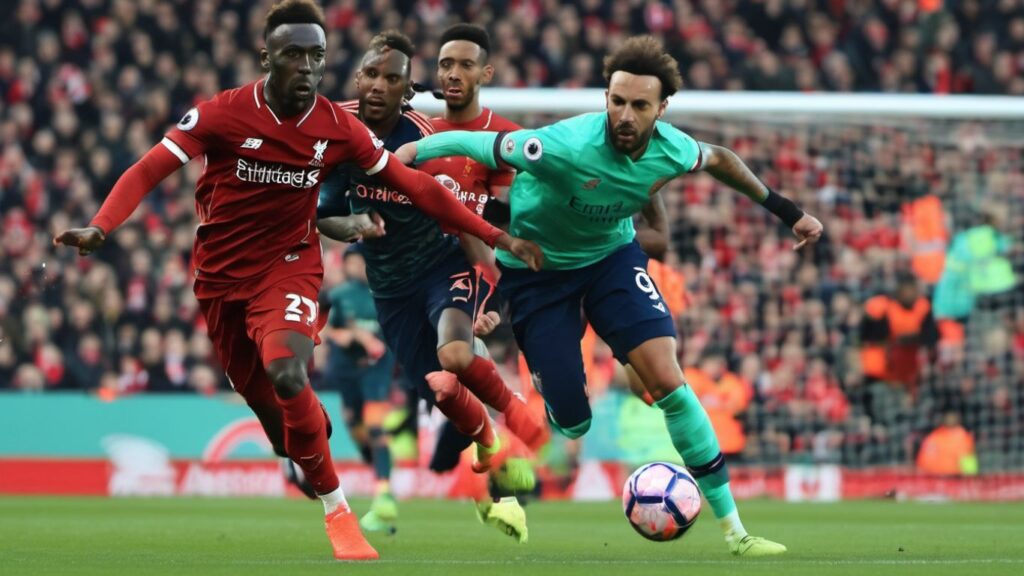
Furthermore, practicing volleys and half volleys can significantly improve your kicks’ accuracy. These skills involve striking the ball before it touches the ground, requiring quick thinking and precise timing. Working on these skills will enhance your accuracy and add versatility to your game.
Remember, consistency is critical when developing power and accuracy in your kicks. Set aside regular training sessions dedicated to improving this aspect of your game. Practice with both feet to maximize your ability and achieve a well-rounded skill set as a soccer player.
By incorporating these techniques and exercises into your training routine, you will gradually develop the power and accuracy needed to become a proficient kicker. The more you practice, the more comfortable and confident you will become when striking the ball. So, lace up your cleats, grab a ball, and perfect your kicks to elevate your soccer game!
Tips for Practicing and Improving Your Kicks
Mastering kicking a soccer ball requires time, dedication, and practice. Like any skill, the more effort you put into refining your technique, the better results you will see on the field. Whether you’re a beginner or an experienced player, here are some essential tips for practicing and improving your kicks.
First and foremost, focus on your stance and body positioning. A solid foundation is crucial for a powerful and accurate kick. Start by planting your non-kicking foot next to the ball, slightly behind it. Keep it pointing towards your target throughout the kick. Your kicking foot should come from the side or slightly behind the ball, allowing you to generate maximum power. Maintain a balanced posture with your upper body leaning forward to promote a proper follow-through.
Next, it’s crucial to develop good ball contact. Aim to strike the ball with the area above the laces on your kicking foot. This area provides the most control and accuracy while still generating sufficient power. Avoid using your toe or instep, resulting in less precise and weaker shots. Keep your ankle locked and your toes pointed down during the kick, creating a flat surface for a clean connection with the ball.
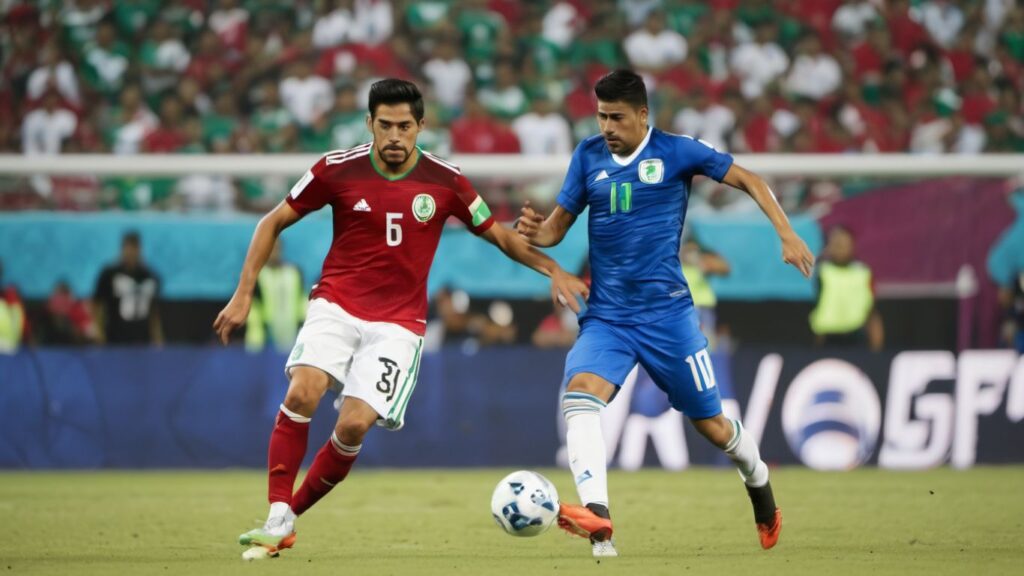
Another tip is to focus on your follow-through. After making contact with the ball, continue the natural swinging motion of your leg towards your target. This follow-through helps generate power and direction in your kicks. Avoid abruptly stopping your leg after the impact, as it hampers the control and distance of your shot. Extending your leg fully and allowing it to swing naturally improves your chances of a successful kick.
In addition to technique, regular practice is essential for improving your kicking skills. Dedicate time to practice kicking with both feet to become more versatile and efficient on the field. Repetition will help build muscle memory, allowing you to execute kicks without overthinking during a game. Start by practicing basic kicks, gradually increasing the difficulty as you progress. Work on short-range passes, long-range shots, and kicks such as volleys and crosses.
To further challenge yourself, incorporate various dribbling exercises into your practice sessions. Dribbling drills will improve your ball control and make you more comfortable with the ball at your feet, helping you execute kicks more effectively during real-game situations. Set up cones or markers to navigate through, practicing dribbling while maintaining good technique and speed. This will enhance your ability to create space and set up for a successful kick.
Lastly, consider the importance of mental preparation. Soccer is as much a mental game as it is a physical one. Visualize successful kicks before attempting them, and maintain a positive mindset throughout your practice sessions. Focus on your short-term and long-term goals, and celebrate your progress along the way. Remember that improvement takes time and effort, so keep pushing yourself and stay motivated.
By incorporating these tips into your practice routine, you can enhance your kicking skills and become a more impactful player on the field. Remember, consistency and perseverance are key. So, lace up your boots, grab a ball, and get ready to elevate your kicking game to the next level!
Common Mistakes to Avoid
When kicking a soccer ball, beginners must correct some common mistakes. These mistakes can hinder your progress and prevent you from mastering the art of kicking. To help you avoid these pitfalls, here are some of the most common mistakes and tips for overcoming them.
1. Poor body positioning:
One of the beginners’ biggest mistakes is incorrectly positioning their bodies before the kick. Maintaining a good balance and having your non-kicking foot planted firmly on the ground is essential. This will provide you with stability and control over your kick. Avoid leaning back too much or kicking off-balance, as this can result in inaccurate shots.
2. Lack of follow-through:
Many beginners tend to stop their kicking motion right after making contact with the ball, which can significantly reduce the power and accuracy of their shot. To maximize the effectiveness of your kick, you need to follow through with your leg, extending it fully after making contact with the ball. This will generate more power and give you better control over the direction of your kick.
3. Wrong technique:
Proper technique is crucial when it comes to kicking a soccer ball. Beginners often need to use the right part of their foot to make contact with the ball. To ensure a clean and accurate kick, you should aim to make contact with the center area of your foot, known as the instep. Using the instep gives you more control and power than using the toe or the side of your foot.
4. Lack of practice and repetition:
Mastering the art of kicking a soccer ball requires practice and repetition. Many beginners need to dedicate more time to practice their kicks. Remember, practice makes perfect. The more you practice, the better you will become. Spend time working on your technique, strength, and accuracy. Incorporate kicking drills into your training routine and make it a habit to practice regularly to see improvements.
5. Overcompensation:
Sometimes, in an attempt to generate more power, beginners tend to overcompensate and swing their legs too forcefully. This can lead to loss of control and accuracy. Instead of focusing solely on power, prioritize accuracy and technique. As you improve your technique, you will naturally generate more power and increase the distance and speed of your kicks.
6. Neglecting the standing leg:
Another common mistake is that beginners need to pay more attention to their non-kicking legs. Remember, the standing leg is crucial in maintaining balance and stability during a kick. Keep your non-kicking leg slightly bent and firmly planted on the ground. This will give you a solid base and allow you to control your kicks better.
7. Lack of confidence:
Confidence plays a significant role in mastering any skill, and kicking a soccer ball is no exception. Many beginners need more confidence, which can affect their performance. Believe in yourself and trust your abilities. Remember that mistakes are a part of the learning process. Embrace them and use them as opportunities to learn and improve.
By avoiding these common mistakes and dedicating time to practice and hone your skills, you will be on the path to mastering the art of kicking a soccer ball. Remember, it’s a journey, so be patient with yourself, stay focused, and keep striving for improvement.
Conclusion
Mastering the art of kicking a soccer ball is no easy feat, but anyone can improve their skills on the field with dedication, practice, and our ultimate guide. Remember to start with the basics, like proper stance and technique, before moving on to more advanced techniques like curve shots or power kicks. Utilize the power of visualization and mental preparation to enhance your performance. And most importantly, always remember the value of patience and persistence. It may take time, but gradually, you’ll see improvements in accuracy, power, and overall control. So lace up your boots, hit the field, and let your kicks soar toward victory. Whether you’re a beginner or an experienced player, this guide is your key to unlocking the ultimate potential in your soccer game.





